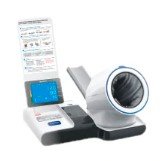The Impact of COVID-19 on Phlebotomy Services in the United States
Summary
- The Covid-19 pandemic led to an increased demand for phlebotomy services in medical labs in the United States due to the need for testing and monitoring of patients.
- Phlebotomists played a crucial role in the frontline response to the pandemic by collecting blood samples for Covid-19 testing and other essential lab work.
- Despite challenges such as Supply Chain disruptions and staffing shortages, the demand for phlebotomy services remains high as healthcare facilities continue to prioritize testing and diagnosis in the wake of the pandemic.
Introduction
The Covid-19 pandemic has had a significant impact on various aspects of the healthcare industry in the United States, including the demand for phlebotomy services in medical labs. Phlebotomists, who are trained professionals responsible for drawing blood samples from patients for laboratory testing, have played a crucial role in the frontline response to the pandemic. This article will explore the effects of the Covid-19 pandemic on the demand for phlebotomy services in medical labs in the United States.
The Role of Phlebotomists in the Covid-19 Pandemic
Phlebotomists are essential healthcare workers who are trained to collect blood samples from patients safely and efficiently. During the Covid-19 pandemic, phlebotomists have been on the front lines of the healthcare response, collecting blood samples for Covid-19 testing and other essential lab work. Their role in the pandemic response has been critical in helping to diagnose and monitor patients with Covid-19, as well as in conducting research on the virus.
Challenges Faced by Phlebotomists During the Pandemic
- Supply Chain Disruptions: The Covid-19 pandemic has disrupted supply chains worldwide, leading to shortages of essential supplies such as personal protective equipment (PPE) and blood collection tubes. Phlebotomists have had to adapt to these challenges by finding alternative sources for supplies and ensuring the safety of both themselves and their patients.
- Staffing Shortages: The increased demand for phlebotomy services during the pandemic has put a strain on healthcare facilities, leading to staffing shortages in some areas. Phlebotomists have had to work longer hours and take on additional responsibilities to meet the growing need for blood samples for testing.
- Increased Workload: The surge in Covid-19 cases has led to an increased workload for phlebotomists, who are tasked with collecting blood samples from more patients than ever before. This increased demand for testing has put pressure on phlebotomists to work quickly and efficiently while maintaining the highest standards of care.
The Demand for Phlebotomy Services in the Post-Pandemic Landscape
Despite the challenges faced by phlebotomists during the Covid-19 pandemic, the demand for phlebotomy services in medical labs remains high in the post-pandemic landscape. Healthcare facilities continue to prioritize testing and diagnosis as part of their ongoing response to the pandemic, leading to a sustained need for blood samples for laboratory analysis.
Future Trends in Phlebotomy Services
- Remote Phlebotomy: The rise of telehealth and remote patient monitoring has led to an increase in demand for remote phlebotomy services. Phlebotomists are now able to collect blood samples from patients in their homes or other non-traditional settings, making healthcare more accessible and convenient for patients.
- Technological Advancements: The field of phlebotomy is constantly evolving, with new technologies and tools being developed to improve the efficiency and accuracy of blood sample collection. Automated blood collection devices and Electronic Health Records have enhanced the capabilities of phlebotomists and made their jobs easier.
- Specialized Training: As the demand for phlebotomy services continues to grow, there is a greater emphasis on specialized training and certification for phlebotomists. Healthcare facilities are looking for highly skilled and knowledgeable phlebotomists who can provide quality care to patients and contribute to the overall success of the lab.
Conclusion
The Covid-19 pandemic has had a profound impact on the demand for phlebotomy services in medical labs in the United States. Phlebotomists have played a crucial role in the frontline response to the pandemic, collecting blood samples for Covid-19 testing and other essential lab work. Despite challenges such as Supply Chain disruptions and staffing shortages, the demand for phlebotomy services remains high as healthcare facilities continue to prioritize testing and diagnosis in the wake of the pandemic. Moving forward, the field of phlebotomy is likely to see continued growth and evolution as new trends and technologies emerge to meet the changing needs of the healthcare industry.

Disclaimer: The content provided on this blog is for informational purposes only, reflecting the personal opinions and insights of the author(s) on the topics. The information provided should not be used for diagnosing or treating a health problem or disease, and those seeking personal medical advice should consult with a licensed physician. Always seek the advice of your doctor or other qualified health provider regarding a medical condition. Never disregard professional medical advice or delay in seeking it because of something you have read on this website. If you think you may have a medical emergency, call 911 or go to the nearest emergency room immediately. No physician-patient relationship is created by this web site or its use. No contributors to this web site make any representations, express or implied, with respect to the information provided herein or to its use. While we strive to share accurate and up-to-date information, we cannot guarantee the completeness, reliability, or accuracy of the content. The blog may also include links to external websites and resources for the convenience of our readers. Please note that linking to other sites does not imply endorsement of their content, practices, or services by us. Readers should use their discretion and judgment while exploring any external links and resources mentioned on this blog.
